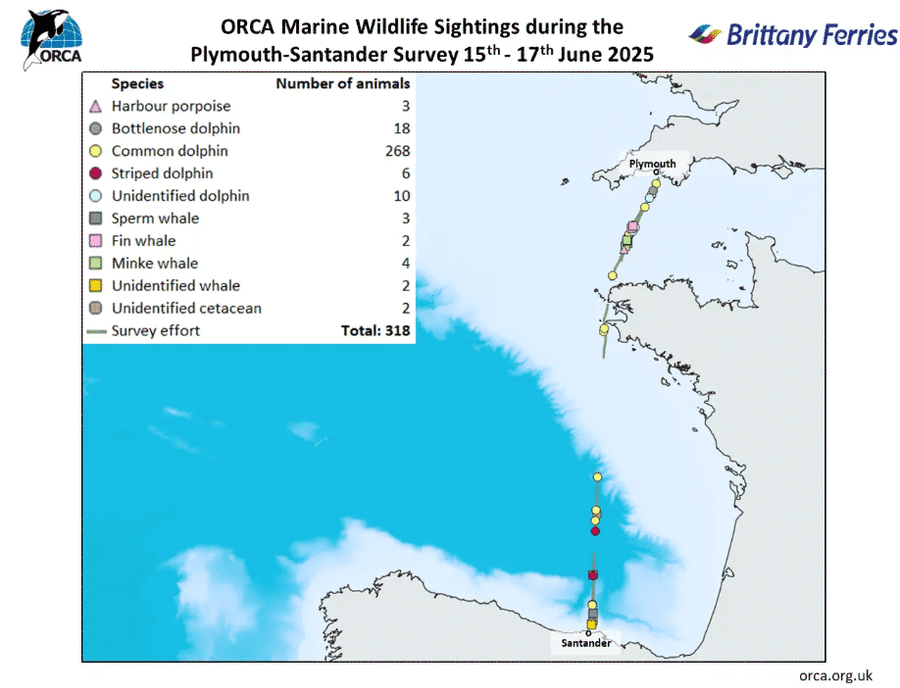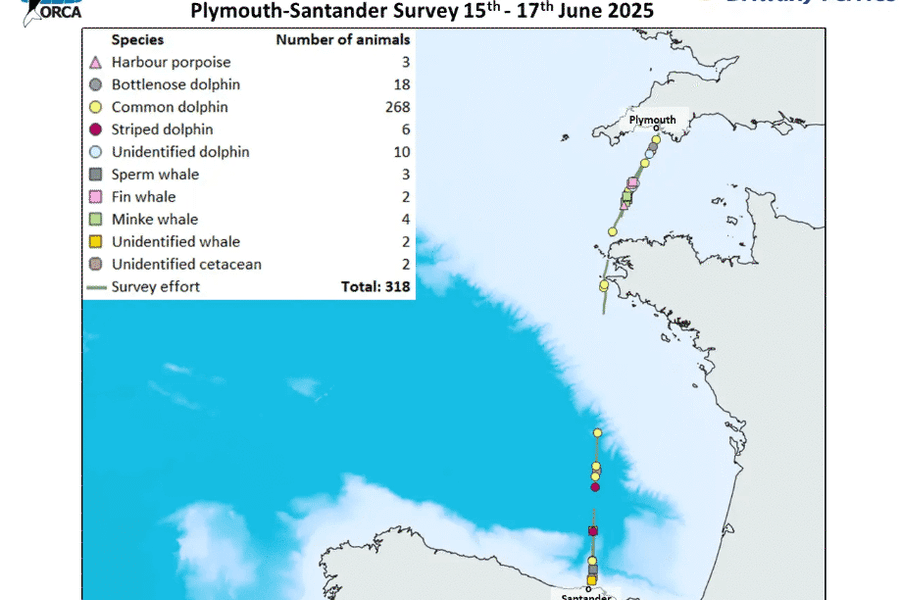In June our team of Marine Mammal Surveyors on board the Brittany Ferries Pont-Aven had an incredible survey sailing from Plymouth to Santander, with 318 animals recorded from seven different species. Team Leader Karen, shares the team’s experience below:
Weather conditions prior to this survey were poor so it was with some trepidation we set off from Plymouth. We headed up to the bridge to start our survey just after leaving Plymouth and within an hour we were encountering common dolphins. The dolphins were easy to spot in a sea state 4 with a light swell. The sea state improved as the evening progressed and we were thrilled to record minke whales crossing the front of the ship. Common dolphins were recorded in good numbers until we finished our survey later that evening.
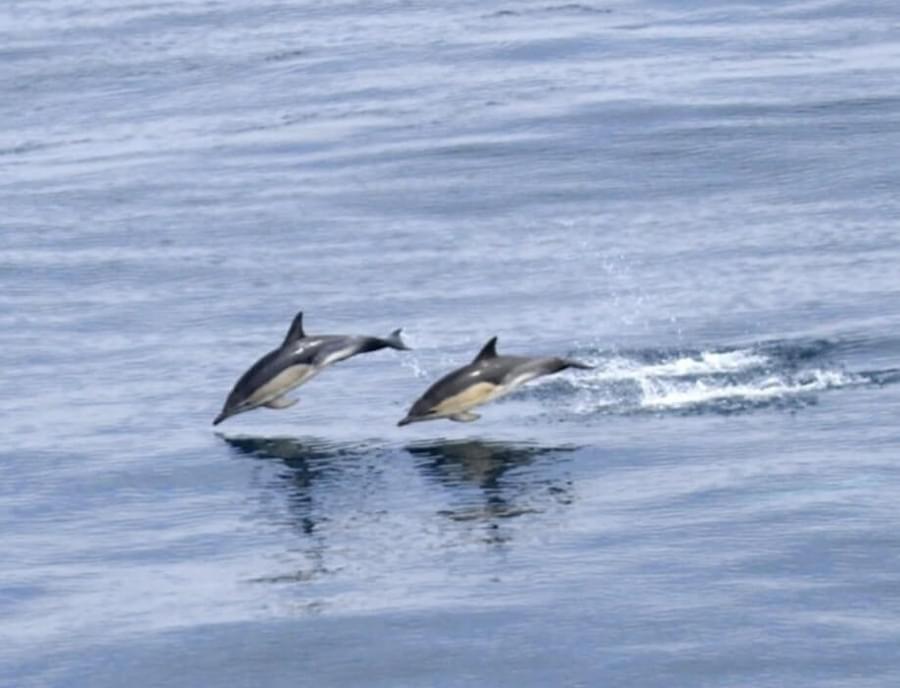
The next morning we headed back up to the bridge early to be greeted with a sea state 2 and beautiful weather. By this time, we were over the continental shelf and into the deeper water in the Bay of Biscay. For much of the early part of the survey we were spotting common and striped dolphins, bow riding, foraging or chasing fish clearly visible in the crystal clear water. As we started our approach to Santander we recorded bottlenose dolphins and more minke whales.
After disembarking in Santander we visited the ice cream shop (of course we did!) enjoying the really warm weather and a stroll around the city. We were back on the bridge shortly after leaving Santander, our survey was quiet to begin with, and the sea state changed between a 3 and 4. At around 16:30 we had the most incredible sighting when the Starboard Observer saw some large splashes with smaller ones closer to the ship. It was clear on looking through the binoculars we had a group of sperm whales! We recorded three individuals, two adults and a calf mimicking the adults. The breaching continued for several minutes and we were able to see their distinct blows as we passed them. What a joy, the crew on the bridge were as excited as we were, all saying this was the first time they had seen something like this. We finished our survey that day feeling like we had witnessed something quite special.
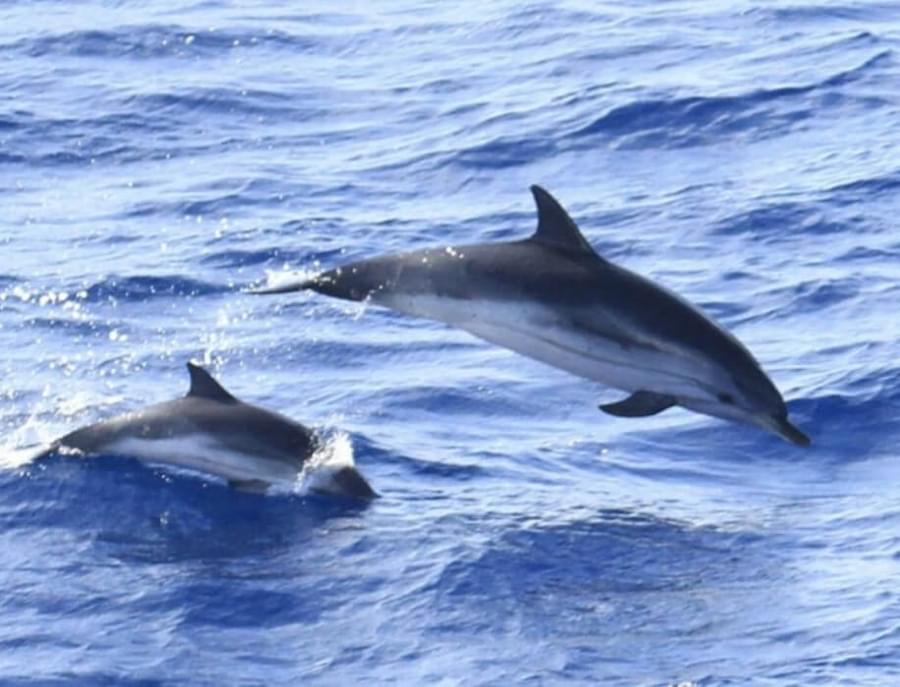
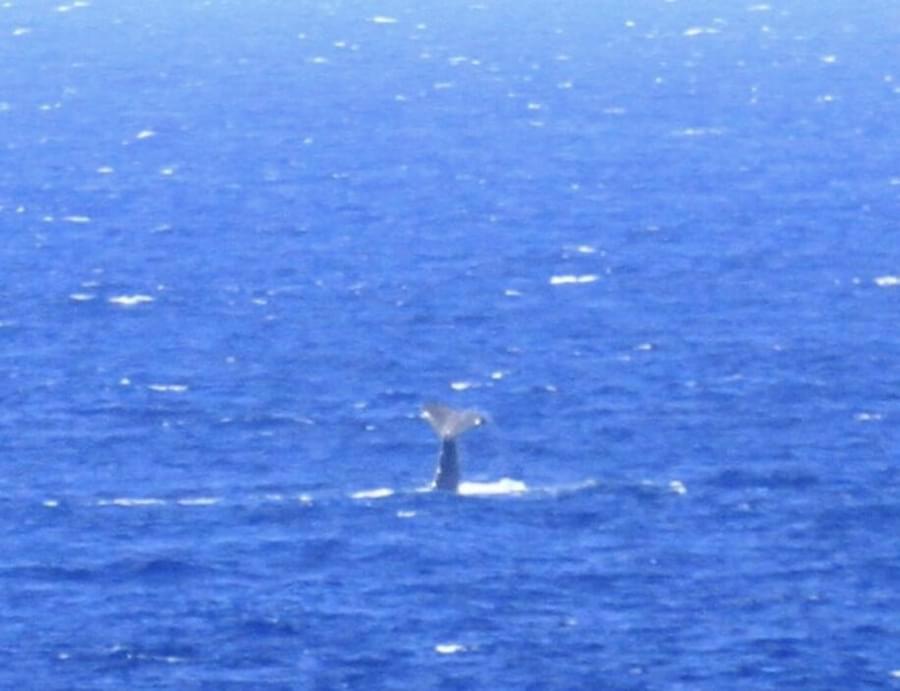
We had another early start on the 17th June, heading back up to the bridge to begin our final watch of the survey. Again, the sea conditions were amazing however our sightings were fairly quiet with a handful of common dolphins recorded. As we sailed toward Brest through Lile de Sein and La Pointe du Raz, heavy fog set in so we vacated the bridge to allow the crew to navigate without disturbance through the islands.
After the fog had cleared, we returned to the bridge to continue our survey. The sea conditions were still exceptional, and we were not far from the shipping lanes when we started to record more common dolphins and minke whales. There was a lot of feeding activity, the dolphins didn’t come towards the ship to bow ride, and it was then that we had our first sighting of a fin whale. The large blow and body of the animal were visible and identifiable as we passed it in clear waters.
Shortly after, another fin whale was recorded, this time in a mixed pod with a large number of common dolphins. The animals were feeding, with lots of bird activity in the area too. The fin whale was seen lunge feeding and you could clearly see the distinctive white right side of the animal’s jaw, a key identification feature of the species. Again, the crew were all excited by this amazing encounter. As we approached Plymouth, we had regular sightings of common dolphins, and a large group of bottlenose dolphins too. Before finishing our survey and leaving the bridge, we thanked the bridge crew for being so accommodating, we feel so privileged to be given this opportunity with Brittany Ferries to collect such valuable scientific data. What an amazing trip!
